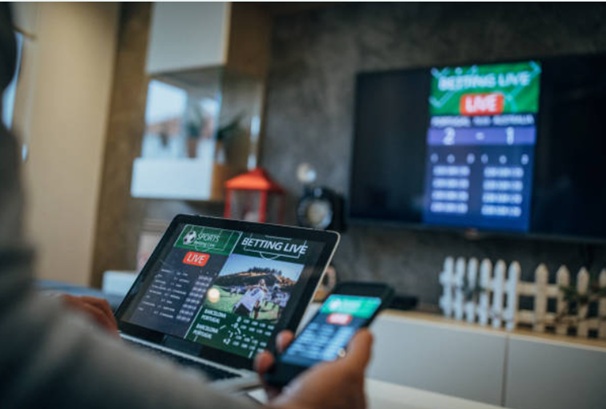Bookmakers present odds in three main formats – decimal, fractional, and American. Each format conveys the same information but uses different notation systems.
Decimal odds
The most straightforward method of calculating odds is to use decimal odds in Europe. Suppose Manchester United has a 2.50 odds of winning, and your stake is multiplied by 2.50. The probability calculation for decimal odds is simple:
- A probability (%) equals (1 / decimal odds) x 100.
Using our example:
- (1 / 2.50) × 100 = 40%
Considering this, bookmakers estimate that the team will have a 40% chance of winning the game.
Fractional odds
Fractional odds appear as ratios like 3/1 (read as “three to one”). Based on your stake, these odds show a potential profit. With 3/1 odds, a $100 bet would win $300 profit, plus your original stake returned.
To calculate probability from fractional odds:
- Probability (%) = denominator / (denominator + numerator) × 100
For 3/1 odds:
- 1 / (1 + 3) × 100 = 25%
American odds
There are both positive and negative odds in the American odds system. Positive numbers (+150) show potential profit on a $100 stake, while negative numbers (-150) indicate how much you must bet to win $100.
Understanding implied probability
A bookmaker’s odds are determined by assessing event probabilities and profit margins. Understanding implied probability helps identify potential value bets. For a football match, the combined implied probabilities for all possible outcomes (home win, draw, away win) will exceed 100% due to the bookmaker’s margin. A typical Premier League match might show:
- Home win – 2.20 (45.5%)
- Draw – 3.40 (29.4%)
- Away win – 3.50 (28.6%)
- Total implied probability – 103.5%
A bookmaker’s theoretical profit margin is the excess above 100%.
Converting between odds formats

While bookmakers often allow you to display odds in your preferred format, understanding conversion methods helps when comparing odds across different platforms:
Decimal to fractional:
(Decimal odds – 1) expressed as a fraction
- Example: 2.50 becomes 3/2
Decimal to american:
- For odds ≥ 2.00: (division by 1.0)
- For odds < 2.00: -100 / (decimal – 1)
- Example: 2.50 becomes +150
Using odds to assess value
Odds serve two crucial functions: indicating potential returns and suggesting outcome probability. An astute punter compares his probability assessments against the bookmaker’s odds to identify value bets. Example scenario:
- Bookmaker odds for Team A – 2.20 (45.5% implied probability)
- Your assessed probability – 55%
- Potential value exists as your assessment suggests the outcome is more likely than the odds imply
Understanding line movement
Odds change based on various factors:
- Betting volume and distribution
- Team news
- Weather conditions
- Market sentiment
Following line movement helps understand market dynamics and identify sharp money movements. Significant odds changes often indicate important information entering the market. Learning how odds work is crucial for making informed decisions in judi bola online. They provide vital information about potential returns and market expectations. While odds formats may seem confusing initially, regular exposure and practice with calculations will interpret second nature.





